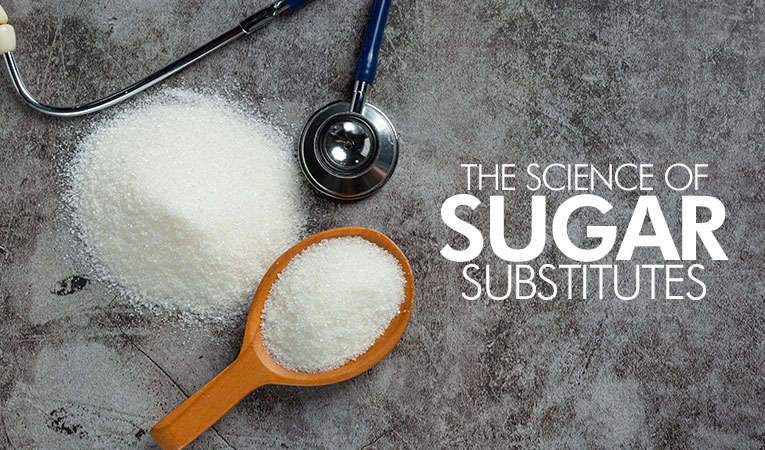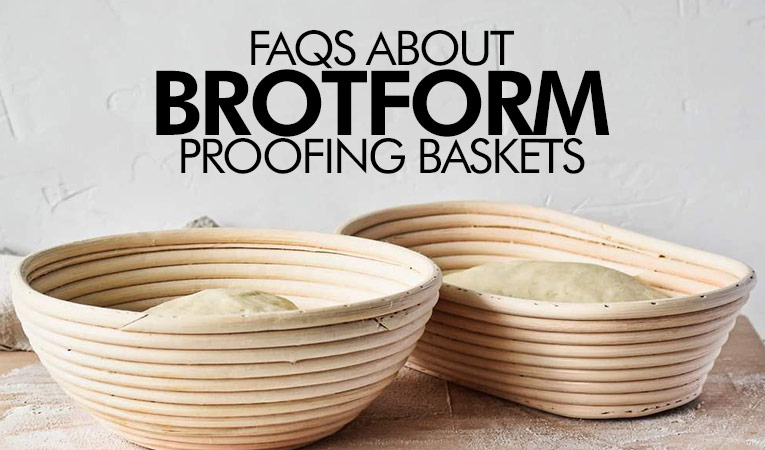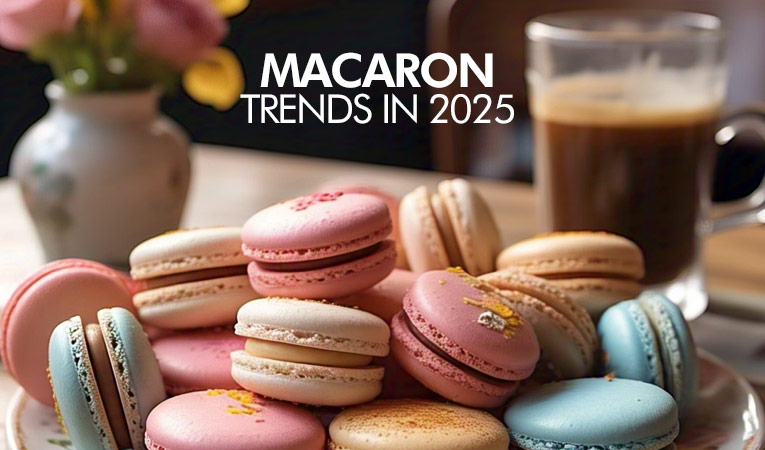Baking with Sugar Substitutes
03-09-2023

In today's health-conscious world, more and more people are seeking alternatives to traditional sugar in their diets. The growing interest in sugar substitutes can be attributed to a heightened awareness of the adverse effects of excessive sugar consumption, such as obesity, diabetes, and other health concerns. As individuals strive to make healthier choices, particularly in their baked goods, the spotlight has shifted to sugar substitutes as potential solutions.
However, successfully incorporating sugar substitutes into baking requires more than just a desire for healthier treats. It necessitates a profound understanding of the intricate science behind these sweeteners. Each sugar substitute behaves differently when exposed to the high temperatures and chemical reactions involved in baking. From texture to flavor to overall structure, these substitutes can significantly impact the final product.
This blog aims to delve deep into the world of sugar substitutes, unveiling the scientific principles that underlie their effectiveness in baking. By shedding light on the intricate chemistry at play, we will empower both novice and experienced bakers to make informed choices when selecting and using sugar replacements. Let's embark on a journey to discover which sugar alternatives are best suited for the science of successful baking.
Understanding Sugar Substitutes
Sugar substitutes, also known as sugar alternatives or sweeteners, are substances used to mimic the taste of sugar while providing fewer calories or a different set of health benefits. They work by stimulating the taste buds on the tongue, activating the sweet receptors, and sending signals to the brain that a sweet taste has been detected.
There are several categories of sugar alternatives, each with its unique properties and applications. These include:
- Artificial Sweeteners: Artificial sweeteners are synthetic sugar alternative that are intensely sweet, often many times sweeter than sucrose (table sugar). Common artificial sweeteners include saccharin, aspartame, sucralose, and acesulfame potassium. They are used in a wide range of sugar-free and reduced-sugar products, including soft drinks, sugar-free desserts, and sugarless gum.
- Natural Sweeteners: Natural sweeteners are derived from plant sources and are considered more "natural" alternatives to sugar. They include honey, maple syrup, agave nectar, and stevia. Natural sweeteners can vary in sweetness and flavor, and they are often used in baking, cooking, and beverages.
- Sugar Alcohols: Sugar alcohols, such as xylitol, erythritol, and maltitol, are sugar alternatives derived from sugar molecules. They provide fewer calories than sugar and have a minimal impact on blood sugar levels. Sugar alcohols are commonly found in sugar-free candies, chewing gum, and diabetic-friendly products.
Understanding the different categories of sugar substitutes is crucial for choosing the right one for specific recipes and dietary needs. Each type of sweetener has its unique taste profile, sweetness level, and chemical properties, which can significantly affect the outcome of baked goods and other culinary creations. In the following sections, we will explore these categories in more detail and provide insights into their roles in successful baking.
The Role of Sugar in Baking
Sugar is an indispensable ingredient in the world of baking, contributing not only to sweetness but also playing several crucial roles in creating the perfect baked goods. Here, we explore why sugar is a fundamental component of baking and delve into its multifaceted functions:
- Sweetness: The most obvious function of sugar is to impart sweetness to baked goods. It satisfies our sweet cravings and enhances the overall flavor profile of cakes, cookies, pastries, and more.
- Tenderizing: Sugar helps to tenderize baked goods by weakening the gluten network in dough and batter. This is particularly important in recipes like cakes and pastries, where a delicate and tender texture is desired.
- Moistening: Sugar is hygroscopic, meaning it attracts and retains moisture. In baking, sugar helps to keep cakes, muffins, and breads moist, preventing them from becoming dry and crumbly.
- Structure: Sugar not only adds sweetness but also contributes to the structure of baked goods. It helps in creating a light and airy texture, especially in cakes and cookies. The incorporation of sugar into fats, like butter, creates air pockets during creaming, leading to a soft and fluffy texture.
- Browning: Sugar aids in the browning of baked goods through the Maillard reaction, which occurs when sugar interacts with proteins at high temperatures. This reaction is responsible for the golden-brown color and rich flavor in baked goods like cookies and bread crusts.
- Flavor Enhancement: Sugar enhances the flavor of other ingredients in baked goods. It can balance out the acidity of ingredients like fruits or cocoa and elevate the overall taste experience.
While sugar contributes significantly to the taste and texture of baked goods, it's essential to recognize that there are situations where sugar replacements can be used to achieve specific dietary goals or accommodate dietary restrictions. In the sections to follow, we'll explore various sugar substitutes and their applications in baking, allowing you to make informed choices while experimenting with healthier or alternative options.
Challenges in Baking with Sugar Substitutes
As the demand for healthier and diabetes-friendly baked goods rises, so does the interest in sugar replacements. However, transitioning from traditional sugar to alternatives isn't always seamless. Baking with sugar replacers presents several challenges, including those related to texture, moisture, and browning:
- Texture: Achieving the desired texture in baked goods can be challenging when using sugar substitutes. Sugar not only sweetens but also contributes to the structure, tenderness, and moistness of baked items. Its absence or alteration can result in different textures, which may not always match our expectations.
- Moisture: Sugar plays a crucial role in retaining moisture in baked goods, preventing them from becoming dry. Sugar replacers often lack this hygroscopic property, potentially leading to drier outcomes, especially in recipes that rely on sugar for moistness.
- Browning: Sugar contributes to the browning and caramelization of baked goods during the baking process. Many sugar substitutes do not brown in the same way, affecting the appearance and flavor of items like cookies and pastries.
Each type of sugar substitute, whether artificial sweeteners, natural sweeteners, or sugar alcohols, can impact baked goods differently. Some may work well in specific recipes, while others may pose challenges. Understanding these variations is essential for successful baking with sugar alternatives.
Despite these challenges, with experimentation and adjustments, it's possible to create delicious and satisfying baked goods that cater to dietary preferences and health-conscious choices. In the sections that follow, we'll delve into the world of sugar substitutes, exploring their unique characteristics, applications, and tips for effective baking.
The Best Sugar Substitutes for Baking
When it comes to baking with sugar substitutes, choosing the right one is essential for achieving your desired results. Here is a list of some of the best sugar alternatives, considering factors like taste, texture, and health:
- Stevia: Derived from the leaves of the stevia plant, stevia is a natural sweetener with zero calories. It's incredibly sweet, so a little goes a long way. Use stevia in its pure form or look for baking blends designed for cooking and baking.
- Erythritol: A sugar alcohol, erythritol provides sweetness without the calories. It has a texture similar to sugar and works well in recipes that require bulk, like cookies and muffins. Erythritol is also heat-stable, making it suitable for baking.
- Monk Fruit: Monk fruit extract is a natural sweetener with zero calories. It has a mild, fruity taste and can be used as a sugar substitute in various recipes. Look for monk fruit sweeteners designed for baking to ensure proper measurements.
- Xylitol: Another sugar alcohol, xylitol is often used as a sugar substitute in baking. It has a similar sweetness to sugar and can help retain moisture in baked goods. Be cautious when using xylitol around pets, as it can be toxic to them.
- Coconut Sugar: Made from the sap of coconut palm trees, coconut sugar is a natural sweetener with a caramel-like flavor. It can be substituted for brown sugar in many recipes, adding a unique taste to baked goods.
- Agave Nectar: Agave nectar is derived from the agave plant and is sweeter than sugar. It's often used in recipes that require a liquid sweetener, like cakes and muffins.
Conclusion
In the realm of baking, the journey of exploring sugar substitutes opens up a world of healthier indulgence. Throughout this exploration, we've unveiled the science behind these alternatives and recognized the indispensable role sugar plays in our baking endeavors. We've also discussed the hurdles and challenges that come with using sugar alternatives.
Remember, finding your perfect match among these alternatives requires a bit of experimentation. Whether it's the natural sweetness of coconut sugar or the zero-calorie allure of stevia, there's a sugar substitute suited for every baking need.
Nevertheless, moderation and balanced nutrition remain the guiding principles. While these alternatives can significantly reduce calorie and sugar intake, they should be a part of a holistic approach to healthy eating.
We invite you to engage with us, share your experiences, and join the conversation. Have you ventured into the world of sugar substitutes in your baking? What are your favorite recipes or experiments? Together, we form a community that celebrates the art and science of baking, striving to create delightful treats that satisfy our cravings while promoting our well-being.





